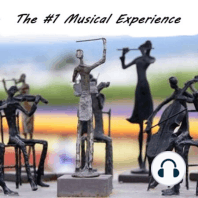24 min listen

J.S Bach - La passion Selon Saint Matthieu - 2nd Partie - 5
J.S Bach - La passion Selon Saint Matthieu - 2nd Partie - 5
ratings:
Length:
26 minutes
Released:
Jul 12, 2022
Format:
Podcast episode
Description
Bach St. Matthew's Passion, BWV 244Johann Sebastian BachChoir and OrchestraSt. Matthew's Passion, BWV 244The St. Matthew's Passion (Matthäus-Passion), BWV 244 is a sacred oratorio by J.S. Bach, written in 1727 for solo voices, double choir and double orchestra, with libretto by picander. It sets chapters 26 and 27 of the Gospel of Matthew (in Luther's German translation) to music, with chorales and arias. One of the masterpieces of Western Music, its original latin title is Passio Domini Nostri J.C. Secundum Evangelistam Matthaeum. Bach revised the work in 1736 and included two organs, and revised it again on 1742 for a new performance, switching (probably due to practical motives) the second organ to harpsichord, adding a viola to the continuo group in Chorus II and inserting a ripieno soprano in both. There is evidence of a further revision in 1743–1746. Get bonus content on Patreon Hosted on Acast. See acast.com/privacy for more information.
Released:
Jul 12, 2022
Format:
Podcast episode
Titles in the series (100)
Swan Lake Op.20 - Act III Concl, Allegro: Why We Should Expose Our Kids To Classical Music https://ourtownlive.net #herbw79While the composition of Swan Lake came in the period of 1875-1876, it incorporated music from an 1871 unpublished effort entitled The Lake of the Swans, the... by The #1 Musical Experience